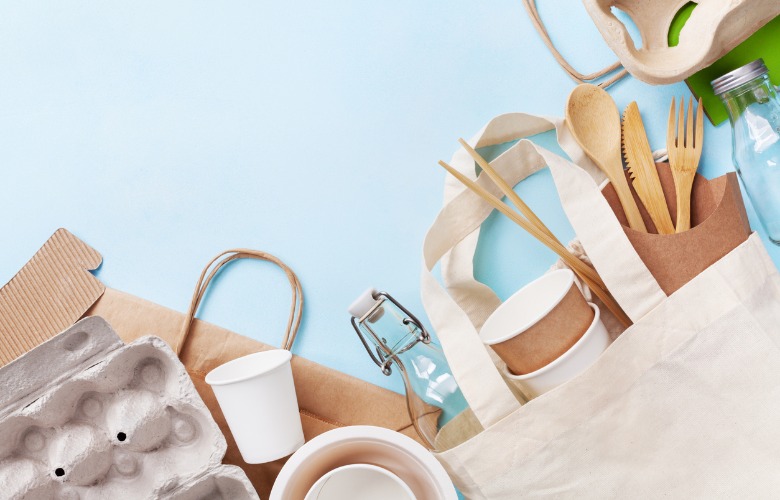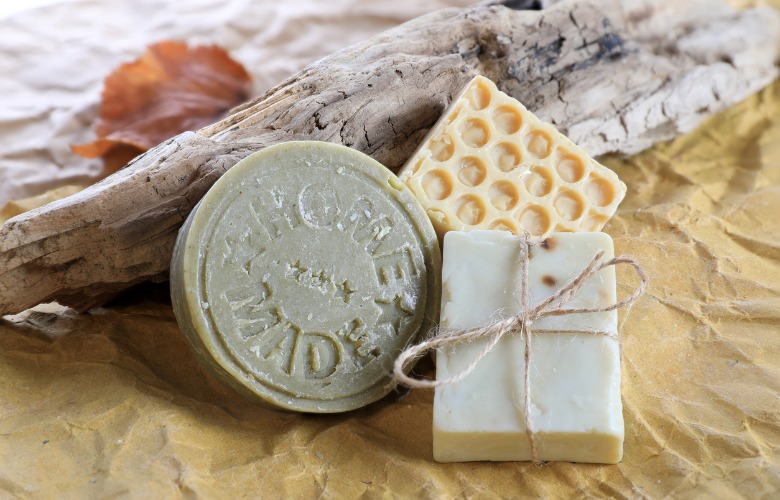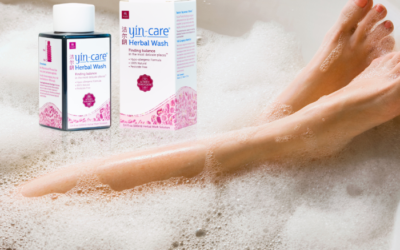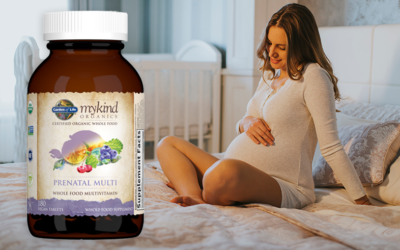Zero-waste, Ecofriendly, Fewer Toxins and Your Health
“We do not inherit the Earth from our ancestors; we borrow it from our children.” – Native American Proverb
What is zero-waste?
Zero-waste means conserving resources and being responsible with the ones you do use. This includes looking at the complete journey from production to consumption to disposal. Trying to re-use, re-purpose, upcycle, recycle, and most of all reduce your use of products, packaging, and materials that can affect land, water, and air; as well as human environment and health – before it is defined as waste.
The idea of eco-living is not new just redefined.
Grandma (along with grandpas and great-grandparents) was practicing eco-living long before it was a catch-phrase, marketing tool, or trend on social media. There was a saying back then, “waste not, want not”.
Here are a few tips to reduce waste and toxins in your home

Paper towels and disposables
Towels, napkins, and other disposables – we are so used to using paper towels, paper napkins, paper plates every day. Paper towels weren’t used in most households until the mid-1900s, first made and sold by Arthur Scott in 1931. Cloth rags or washcloths were used before that and can still be used today. Ditto for cloth napkins, glasses, plastic straws, plastic water bottles, plastic cups, dishes, and utensils.
- In the U.S. we use 13 billion pounds of paper towels each year, each person in America uses 2,200 paper napkins per year, and 40 billion plastic utensils per year are used in the U.S. alone
- The average American family uses 1,500 plastic shopping bags each year – out of the 100 billion used each year.
- An average of 1.6 plastic straws is used per person each day – out of 500 million drinking straws used each day in America.
- Every year the world uses 500 billion plastic cups and 16 billion disposable coffee cups according to Earthday.org.
- In the U.S. we use a “million plastic bottles a minute – 91% of which are not recycled.” According to Forbes.com
A great swap is to use cloth or reusable instead
- Use cloth napkins – they can sit on your dining table in a pretty basket and be washed with your normal laundry. Plus, they make meals feel fancier!
- Keep cloth towels near the sink – so after you wash your hands, you can quickly and easily dry them.
- Pass on take-out napkins, utensils, straw when ordering in.
- Same for condiments – you know you have a stash of ketchup and soy sauce that you probably will throw out – use your big containers at home
- Be conscious of the paper towels you are using. Do you need the whole thing? Try ripping it in half instead.
- Use reusable straws – they are available in stainless steel, bamboo, silicone, and plastic – some even fold up to travel easily and come with straw cleaners
- Use a reusable water bottle – there are many to choose from
- Buy in bulk and decant them into glass jars – easier to see and less waste from using smaller containers all the time

Plastics
We love plastic, it is easy to use, cheap to buy, and easy to throw away after we are done with it. However, there are downsides to plastics beyond filling up the landfills and polluting the earth – they are toxic to our health. Studies show that some chemicals in the plastic can leach into our bodies and have been linked to metabolic disorders, obesity, and reduced fertility. Two chemicals, in particular, are toxic and known as endocrine disruptors, phthalates, and bisphenol.
Phthalates
Also known as plasticizers, phthalates are found in many plastics including baby toys, food materials, medical devices, cosmetics, soaps, shampoos, and body washes.
Bisphenol A
Also known as BPA, bisphenol A resides in hard plastic called polycarbonate and epoxy resins since the 1960s and the CDC has reported that approx.. 93% of people ages six and over had BPA in their urine. Our exposure to this toxic plastic chemical can cause possible health effects including infertility (male and female), endocrine disorders, metabolic disorders including polycystic ovary syndrome (PCOS), precocious puberty, breast and prostate cancers, and disrupt estrogen receptor pathways.
Using glass, wood, bamboo, or other non-plastic materials especially in your foods and hygiene products can help reduce the toxins in your body. Mason jars may be trendy now but back in the day, they were a staple in many households.

Leave the toxins out of your housecleaning
You want to keep your house clean, but many cleaners have harsh chemicals, toxins, and VOCs (volatile organic compounds). These chemicals can be linked to asthma and respiratory illness, disrupt our hormones, cause headaches, irritate our eyes and throats, and even cause certain cancers. It may sound like a lot of work to switch to greener cleaners, but it is inexpensive and easy.
Natural cleaning supplies
- A glass spray bottle
- Microfiber cloths
- Liquid castile soap
- White vinegar
- Baking soda
- Hydrogen peroxide
- Lemons
- Borax
- Essential Oils.
Need DIY natural cleaning recipes? Try these.
Even if you are not making your own, try to purchase cleaners and soaps that are eco-friendly, lessening their impact on the environment and your health.

Healthy beauty
Clean beauty can mean many things, for some, it means that it is vegan, cruelty-free, all-natural, organic and for others, it is made sustainable and uses eco-friendly practices and for others, it means that it doesn’t contain dangerous toxins. Toxic ingredients in beauty products can cause a range of issues including hormone imbalances, cancers, and more. The European Union has banned 1,328 of these ingredients, yet the U.S. has only banned 11 to date.
Why non-toxic beauty?
While many people try to minimize toxins in their lives, they tend to forget beauty products or it becomes so difficult to keep track of the many ingredients that can be toxic. In addition to makeup, skincare products, hair products, and others are included when reducing the toxins you are exposed to. Ingredients can be hidden under “fragrances” since the FDA doesn’t require them to list all of those ingredients.
Since our skin is our largest organ and absorbs water and oxygen – toxic ingredients can end up in our bloodstream. So it is important to know which you are exposing yourself to.
Ingredients to look for in your beauty products include
California has signed into effect the Toxic-Free Cosmetics Act (AB 2762) which bans 24 ingredients at a state level. “These ingredients include dibutyl phthalate, diethylhexyl phthalate, formaldehyde, paraformaldehyde, methylene glycol, quaternium-15, mercury, isobutylparaben, isopropylparaben, m-Phenylenediamine, and its salts, o-Phenylenediamine and its salts, and several per- and polyfluoroalkyl substances (PFAS) and their salts.
Other common toxic ingredients in cosmetics and beauty supplies:
- Parabens – Ethylparaben, Butylparaben, Isobutylparaben, Isopropylparaben, Methylparaben, and Propylparaben.
- Toxic chemicals in SPF – oxybenzone, avobenzone, octisalate, octocrylene, homosalate, and octinoxate
- Formaldehyde – can cause certain cancers, wheezing, coughing, skin irritation.
- Dmdm Hydantoin
- Diazolidinyl Urea
- Imidazolidinyl Urea
- Tosylamide/Formaldehyde Resin
- Quaternium-15
- Sodium Hydroxymethylglycinate
- 2-Bromo-2-Nitropropane-1,3-Diol
- Polyoxymethylene Urea
- 5-Bromo-5-Nitro-1,3 Dioxane
- Glyoxal
- Methenamine
- Benzylhemiformal

Switch to a bar
This is as easy as switching your liquid soaps in bottles to bar soap. There are many eco-friendly brands available or you can try making some homemade ones. Either way, you are going to be greener when you wash up.
Why bar soaps are greener
- They use 6 times less product per wash
- 6 times fewer raw materials to manufacture
- 6 times less space in the truck when transporting
- Way less packaging or no packaging at all
- A lot fewer chemicals
- More economical.

Jemile earned a degree in Food Studies and Writing and has worked for almost 23 years in the medical and health industries. She has been a digital marketing consultant for Acupuncture Atlanta since 2011 as the social media manager and content manager. Writing has been a childhood dream for Jemile and writing daily for clients in the health, wellness, food, and art industries have been phenomenal. Jemile is originally from Brooklyn, NY, and lives in the Hudson Valley, NY. She lives with her husband, two daughters, her dog, and two fish. You can contact Jemile via Linkedin, her mom blog, or her website, lunaroseconsulting.com



